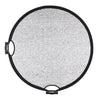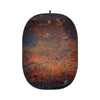Why is Shutter Speed so Important for Photography Lighting?
Among the various settings that photographers must master, shutter speed stands out as one of the most critical, especially when it comes to using lighting for your images. Understanding how shutter speed affects lighting is essential for this reason. Read more to learn how your shutter speed can impact your lighting and image, and how to ensure it's set to give you the best image results.
What is Shutter Speed?
Shutter speed refers to the amount of time that the camera's shutter remains open to expose the sensor to light. Measured in seconds or fractions of a second (like 1/1000 or 1/30), shutter speed plays a vital role in determining the exposure of an image, the ability to freeze motion, and the overall aesthetic.
The Relationship Between Shutter Speed and Light
The Exposure Tringle: Shutter speed is one part of the Exposure Triangle (Shutter Speed, Aperture, and ISO. All of these affect exposure, however, they affect the image in differently). A faster shutter speed (e.g. 1/1000) means less time for light to hit the sensor, resulting in a darker image. Conversely, a slower shutter speed (e.g., 1/30) allows more light, leading to a brighter image.
Motion Blur: Shutter speed also affects how motion is captured in your images. Fast shutter speeds can freeze action, making it ideal for sports photography, or splash photography. On the other hand, slower shutter speeds (long exposure photography) can create intentional motion blur, adding a sense of movement, which can be particularly effective in street photography with crowds of people or traffic/headlights.
Tip! When using slower shutter speeds, camera shake can become an issue. Use a tripod to stabilise your camera, allowing for longer exposures without blurriness.
Shutter Speed with Flash
It's also important to keep an eye on your shutter speed when shooting with flash lighting.
If you're shooting at the highest your flash sync speed can go, you might find that you end up with the camera shutter encroaching on the image. To combat this, you can use a lower shutter speed on your camera. As long as the flash duration is quicker than your shutter speed, the sensor should still receive the full power of the flash in the image taken.

A slower shutter speed will also enable you to take in more of the ambient light in your scene and brighten the background. If you're looking for a super dark background, just position your flash in front of your subject or model and make your shutter speed faster and it will block out the light.
High Speed Sync
High Speed Sync (HSS) is a feature in some modern camera systems that allows photographers to use flash at shutter speeds faster than the camera's maximum sync speed for the purpose of overpowering ambient lighting. It is typically around 1/200 to 1/250 seconds. This feature is particularly useful when you want to balance ambient light and flash lighting in situations where you need to use a wide aperture or a fast shutter speed.
Note: Needing HSS is not universal across all cameras, as it depends on the design of the shutter. HSS is only needed with cameras that use a Curtain shutter (most medium format cameras such as Hasselblad cameras use a “Leaf shutter”, and they can use any shutter speed the camera is capable of with flash). There is also a model of Sony camera that uses a global shutter (the A9 III), which is also not affected by flash.

Related Articles: True High-Speed Sync vs Long Tail High-Speed Sync, Can You Use HSS to Freeze Motion?
When your camera's shutter speed exceeds the flash sync speed, the curtain movement changes. It's like a seamless scan, with the curtains never fully opening at any point. If your flash fires only once during this time, you may end up with unsynchronised lighting with dark edges and off shadows. With HSS, your flash co-operated flawlessly with high shutter speeds. It ensures every nook and cranny of curtain movement is illuminated, resulting in stunning picture-perfect shots.
See similar: True High-Speed Sync vs Long Tail High-Speed Sync
How to achieve HSS
To use high speed sync, you need to make sure you have right equipment. HSS can only be done with flash, and won't work with LED Continuous lighting, as it's the flash that provides the extra light for the image to work. Check out our range of HSS compatible flashes here:
 |
 |
 |
| Godox AD200Pro II (200w) Battery Flash) | Godox AD300Pro (300w) Battery Flash | Godox AD600Pro II (600w) Battery Flash |
To be able to use HSS compatible flashes with your camera, you also need a trigger! Make sure the trigger is also compatible with HSS and has a specific model to fit your camera. Any universal triggers such as the Godox XT16 won't work for HSS and will only have basic functionality, as the trigger needs to be able to communicate with all pins on the hotshoe for full communication and functionality.
We'd recommend one of these triggers from the Godox or PiXAPRO range (which are all compatible with Godox and PiXAPRO flashes!):
 |
 |
 |
| Godox XPro Trigger | Godox X3 Compact Touchscreen Trigger | Godox XPro II Trigger (with Bluetooth App Compatibility) |
TL;DR?
- A faster shutter speed enables you to capture and freeze action in your images.
- But, the faster the shutter speed, the less light enters your image.
- Using flash will enable you to use a high shutter speed to freeze action without sacrificing the light.
- HSS is for when you need as much light as possible in your image and pushes your shutter speed further to achieve this (not for freezing action).
Still got questions? Get in touch with our team at info@essentialphoto.co.uk for some more information on how shutter speed will impact your lighting choices, and for some help on what equipment you'll need for your photography.











































































































































































































































































.png?v=1684398018113)















